Being a freelance photographer
By Edward Quinn
Being a freelance photographer - I worked for newspapers and magazines all over the world - was certainly not easy. It meant a lot of work, initiative, investments and responsibilities. But it also meant that I had a certain freedom, I could choose my own subjects. I was meeting all kinds of interesting people and it was always a great satisfaction to see a photograph published.
It was not easy for a freelance to ask a celebrity to pose for pictures.
An introduction by an important newspaper or magazine was certainly very helpful. However I remember only one film star who refused categorically to be photographed, it was La Divine, Greta Garbo. I did not like to work with a zoom lens, but faced by so much obstinacy, I resignedly had to use this stratagem.
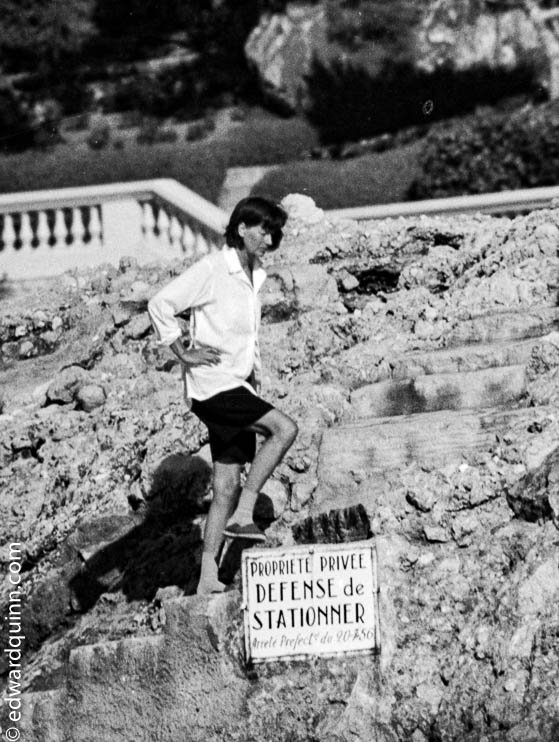
Photographing stars has one advantage, they usually know how to pose in front of a camera. However to get a picture showing them as they really are, somehow behind the curtain, is much more difficult, just because they are actors. And the glamour is practically always there.
I always tried to get pictures of the people which would not upset or offend them. This is a way was in my favour, as the personalities or stars I photographed several times over the years became confident and gave me much more freedom.
In the fifties most of the stars I photographed were in their heydays. When they came to the Riviera, they very often came on holidays to relax, sometimes with their families. The Hollywood stars especially seemed to be at ease, away from the restrictions of the film studios and without their attentive agents. This of course did not mean that it was facile to interview or photograph them. It often needed time and patience to convince them, and very rarely did I have the occasion to take a series of pictures which I could leisurely arrange. There was never any question of bringing along lights to get portraits which might look more startling or flattering, I had to be satisfied with the natural light available.
Nevertheless I had the chance to make exclusive pictures of some stars who were or who became world-famous.
I spotted Audrey Hepburn when, practically unknown, she worked in the film “Monte Carlo Baby” and I immediately realized that she was a very good actress. I persuaded her to accompany me on a photographic safari up to the medieval village Eze. She was not only an excellent photo model, she also proved to be a willing help, pushing my old Mathis car (1931 Type PYC) which had a flat battery. Audrey sent the photographs from that session to her agent in Hollywood and captured the leading role in the film “Roman Holiday” with Gregory Peck.
When Sophia Loren came to the Cannes Film Festival, she was a star, not only for her physical appearance but also for her acting. She was the center of all action, a cohort of photographers was swarming around her. I went to a press conference in Sophia’s hotel room and as I was not satisfied to get just the same photo as everybody else I locked myself in the bathroom and came out when all was quiet. After a moment of surprise and hesitation, Sophia accepted with good grace to let me take my exclusive pictures.
When Kim Novak came to Cannes, she made headlines romancing with Cary Grant, but also flirting madly and sadly with Prince Aly Khan. So as not to miss her departure, I spent the night together with a photographer friend in front of her hotel room.
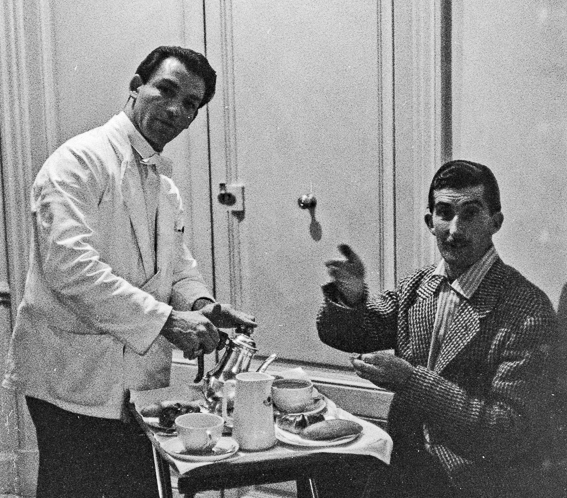
Elizabeth Taylor came several times to the French Riviera. One year I happened to photograph her with three of her husbands. She holidayed in Saint Jean with Mike Todd, and their guests Debbie Reynolds and Eddie Fisher. He was to become her next husband. Another guest whom they were meeting at Nice airport was Michael Wilding.
Another year I photographed Liz at the Hotel de Paris in Monte Carlo. Liz spotted a beautiful necklace at the Cartier jewelry shop at the hote. A courtier from Cartier was delighted to let her try on the necklace and some matching earrings. Liz found them royal, an expression also used by her husband when he heard the price 2,000,000 francs which he found just a bit too much. Liz gave the necklace back, but Mike Todd let her keep the earrings, worth half a million‚ as a compensation.
I first met Grace Kelly when she came to the Cote d’Azur to work in the Hitchcock film “To Catch a Thief’. Grace came back to attend the Cannes Film Festival in 1955. The French magazine PARIS MATCH had the idea that a meeting between the bachelor Prince Rainier of Monaco and the Hollywood film star could make a good picture story. As I already knew Grace and had made an exclusive reportage on Prince Rainier, I was chosen as a photographer to accompany Grace. On the way from Cannes to Monaco, as I was anxious not to be left behind I followed Grace’s big limousine too closely and at a sharp turning I banged into the car. The only damage was to my own car. At the Prince’s palace we learnt that the Prince was detained and had sent word to apologize. I suggested to the Prince’s aide-de-camp that Grace might like to look around the palace. l went with her and got a series of pictures of this beautiful woman just before she met her future husband.
There were certain focal points along the coast where one could hope, without much risk, to meet a star. There were the big hotels, favoured by the ceIebrities - the Hotel de Paris in Monte Carlo, the Hotel Negresco in Nice, the Hotel du Cap d’Antibes and the Carlton Hotel in Cannes.
The superb gala evenings held in Monte Carlo at the Sporting d’Eté during the summer season and in the lntemationa Sporting Club in the winter would have a magnetic attraction for the rich and the famous and most of the notabilities of the Riviera would attend.
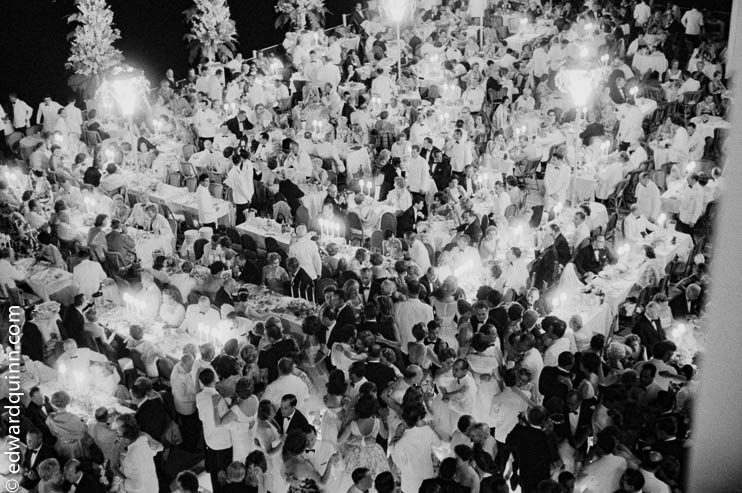
Hollywood stars were invited either to perform or just as guests to add even more glamour. For years, in summer and winter, on friday night I knew that my self-imposed assignment would be the gala night in Monte Carlo. Photographers were allowed to operate at ease as long as they did not disturb the guests in any way .This changed drastically after the much publicized marriage of Prince Rainier and Grace Kelly. International newspapers and magazines became very interested in all events taking place in the principality. “Laissez passer” permits were now needed for all official occasions and strict operational orders were given. PR officers took over and it became quite difficult to work as an independent reporter.
In Monte Carlo the celebrities could also be found on the Onassis yacht “Christina”. As I had photographed Onassis long before he was known, l was one of the rare photographers aIlowed on board and I could freely take pictures. Onassis would often invite famous personalities on board his yacht. There might be a cosmopolitan group of guests but he favored Hollywood stars.
Onassis liked publicity and used it to his advantage to advance his business projects. Some people thought that he only became involved with this dazzling world of the international set and the stars so that he could beguile the business tycoons.
The Victorine Film Studios in Nice had their moment of glory when the genial film director from Hollywood, the Irishman Hex Ingram (The Four Horsemen of the Apocalypse) arrived in 1925. In the fifties the film production business at the Victorine Studios was thriving and many films with important actors were made. The director of the studios, Monsieur Clair, regularly informed me when an interesting scene with some well-known actor or actress was being made.
The young Brigitte Bardot worked with her director-husband Vadim on “And God created Woman”, the film which made Bardot famous.
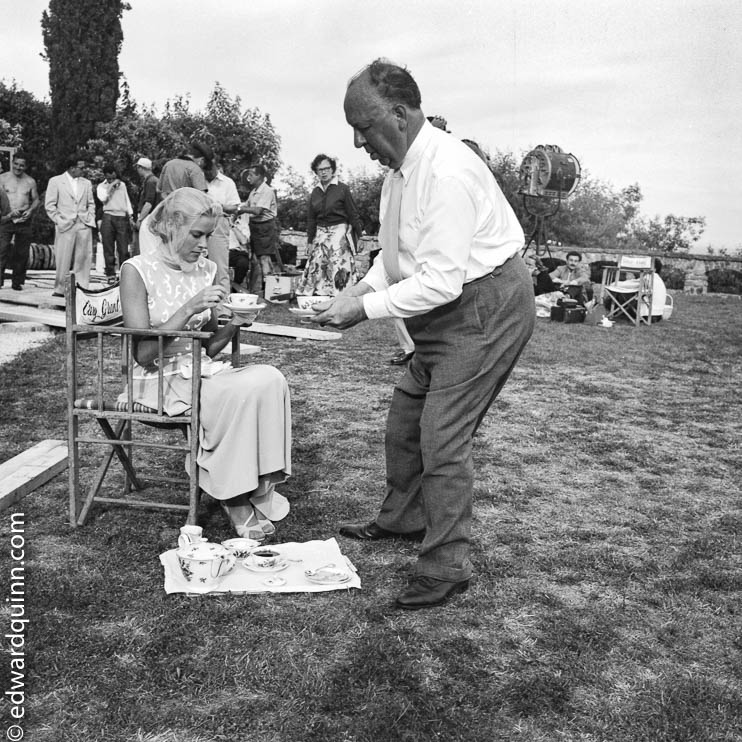
Alfred Hitchcock introduced Grace Kelly to the Riviera when they worked on “To Catch a Thief“. Orson Welles starred in “La Fayette”, Frank Sinatra in “Kings Go Forth”, David Niven, Jean Seberg and Deborah Kerr in “Bonjour Tristesse”. I made a modest contribution to film making in Nice, I directed a documentary film “Picasso, Ia Guerre et la Paix” and I also had a three-word second role in a film with Terry Thomas.
The Cannes Film Festival offered the possibility to meet a great number of stars of all nationalities. However it was extremely difficult for any reporter to get an exclusivity or a scoop. One had to work amongst a struggling and screaming mob of rivals.
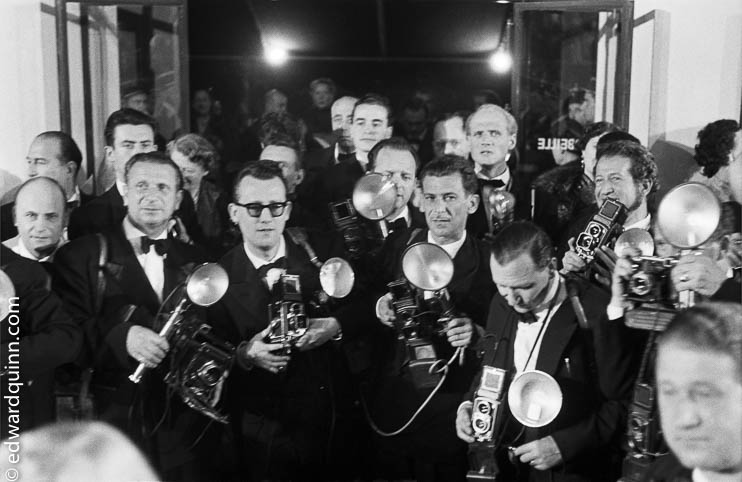
During the fifties, at each film festival a swarming squad of photographers, mostly Italians, the so-called paparazzi, crowded into Cannes. They behaved like shock troops surrounding actresses and starlets, so as to force them to obeytheir orders Even the most famous and cherished stars would have to comply and pose obediently.
lt was very difficult to compete with the paparazzi, as they leagued up together to prevent other photographers to get a picture. While one of them cornered an actress to photograph her, the others would block the access so as to keep any other reporter away from their prey.
Fortunately I knew the paparazzi’s strategies and somehow managed to outwit them. I had to try and anticipate where the stars would go, by getting information from different sources: press agents, hotel concierges, friends etc. When I did get a scoop, the paparazzi with whom I stayed on quite friendly terms, would always acknowledge it.
The Film Festival slowly changed its character towards the end of the sixties, it became a combination of film showings and a market place for distributors. The time when film stars were really stars was gone. A new system took shape, the PR officers regulated all contact between the stars and the press and it became practically impossible to operate as an independent journalist.
Another place where one might find at least one star along the coast was Saint Tropez. The world fame of Saint-Tropez, far over on the west side of the Cote d’Azur, only dates from the fifties. It was due to the new vehicle of liberty, the motor car, and of course Brigitte Bardot. Up to then a few aristocrats and artists had heard of the place and it was only visited by an elite. It was difficult to get to Saint-Tropez, for a long time only an occasional coach service existed and from time to time an old boat sailed over from St. Raphael. In the fifties the popular tourism started and St. Tropez was invaded and overcrowded especially during the summer and it lost its former charm, I have certainly lived through a very exciting, unique period on the Riviera, the “Golden Fifties”. Shakespeare wrote: “All the world’s a stage and all the men and women merely players”. Undoubtedly the French Riviera during the fifties was one of the biggest and most beautiful stages in the world, the actors were often magnificent and glamorous. The curtain went down, but the memories remain.
Edward Quinn, October 1996
